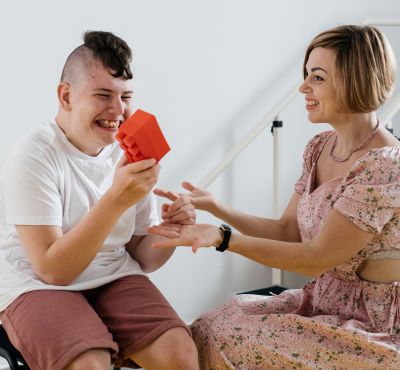What Is Cerebral Palsy And How Does It Affect Children?
Cerebral palsy is a motor disability that is the most common type found in children. CP occurs when the brain does not properly develop prior to birth. The word cerebral is related to the brain, and palsy suggests weakness or problems with the muscles. Therefore, CP affects an individual’s ability to control their muscles.

Cerebral palsy is more common among boys than girls. Approximately 75% to 85% of children experience the form of the disorder called spastic CP. This causes muscles to become stiff and movement to be challenging. However, more than 50% of children with cerebral palsy can walk without any support.
Some children can have co-occurring conditions along with CP. One in every 10 children with CP also has autism, and 1 in every 4 children with CP also has epilepsy.
What are the early symptoms of CP disability in children?
Cerebral palsy disability is one of the most prevalent motor disabilities for children. The condition may be obvious at birth or shortly after the birth of a child.
Many children with CP are born premature and/or underweight. Kernicterus is a condition that can increase the risk of CP. It is a brain damage condition that occurs when jaundice in newborn babies is not given proper and timely medical treatment.
By the time a child is 5 years old, their movement should be fully developed. They should be able to stand up, sit, walk, and roll over with ease. If there are delays in these movement milestones, it could be a sign of palsy disability.
Children with CP who are 3 to 6 months old may feel floppy or stiff. Their heads may drop forward or their legs may seem very rigid. Babies who are over 6 months old may experience difficulty in rolling over, moving their hands, and performing other movements. Babies who are over 10 months old may often find it challenging to crawl, scoot, or move their hands or feet together.
Can you get disability for cerebral palsy?
Adults with severe CP disability may be eligible for obtaining Supplemental Security Income (SSI) and Social Security Disability Insurance (SSDI) benefits. Most adults can qualify as children for the SSI aids. However, if a person is unable to apply for disability as children, they may be able to apply for disability benefits as an adult.
In listing 11.07, Social Security Administration (SSA) gives the eligibility criteria that a person needs to meet in order to qualify for palsy disability benefits. The person must experience:
- Extreme limitations in interacting with people, such as speech problems like aphasia, hearing problems like sensorineural loss, or vision issues like hyperopia.
- Problems in the movement of two or more extremities, including an arm or leg or both legs and arms. This causes problems in maintaining balance, walking, or standing.
- Marked limitations in thinking, social interaction, controlling behavior, or completing tasks. If there are difficulties in only one of these areas, the person is eligible for benefits.
Cerebral palsy affects communication and other self-maintenance tasks including eating, cleaning, and more. All these factors can affect an individual’s capacity to independent or complete daily activities.
SSDI and SSI have different requirements. For instance, income thresholds are on the higher side for SSDI benefits in comparison to SSI benefits. Also, if you want to apply for SSDI for you or your child, you or your spouse must have paid all your taxes.
Children with cerebral palsy disabilities can apply for SSI benefits
People with cerebral palsy or their parents or guardians can apply for SSI aid. However, there are some limitations on the income levels of families that can qualify for benefits. If the household income exceeds the indicated level, then the family will not qualify for the SSI benefits.
Younger children are evaluated based on their behavioral and developmental capabilities along with other factors such as crawling, standing, swallowing difficulties, and more. For older children, SSI will be looking for traits related to mobility and independence. If the older child is unable to manage their daily tasks independently, then they will be eligible for aid.
The SSA also evaluates children with intellectual disabilities and other disabilities aside from Cerebral Palsy impairments. The SSI program also evaluates whether their palsy disability is worsening over time or if occupational therapy is needed for their treatment.
How do you apply for cerebral palsy (CP) disability?
To apply for disability payment for cerebral palsy (CP), you need to contact the SSA and schedule an appointment. Furthermore, SSA will provide all the necessary information regarding the documents you must present, including medical and financial records.
It can take 6 months or more to get approved for disability. That’s why if you or your child has CP and you need financial assistance, you should consult with a lawyer who can help you as soon as possible. If you need assistance with applying for CP disability or appealing a denial, contact us today.